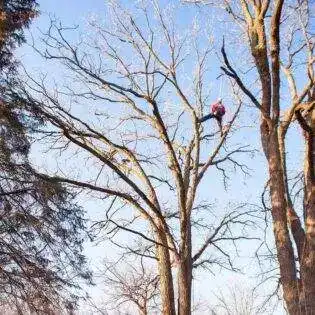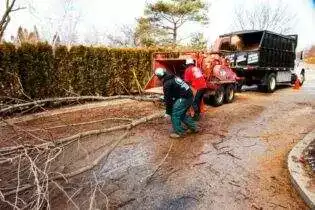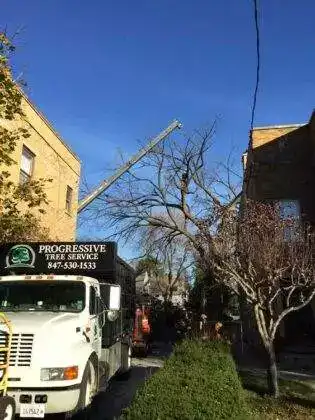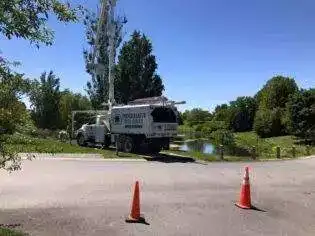What is the gypsy moth?
The Gypsy moth (Lymantria dispar) is a pest native to the European continent. It was first introduced to the United States in Massachusetts in 1869 and now occupies much of the eastern states, including New York, Indianapolis, Jacksonville, Philadelphia, Columbus, Charlotte, Washington, Boston, Nashville, Detroit, etc.
Gypsy moths attack trees wherever they find them, whether in natural forests, plantations, rural, or urban areas. Their larvae can attack thousands of trees in a single area, defoliating them leaving them vulnerable to secondary fungal infections and pest attacks.
Life Cycle
Female Gypsy moths lay their egg masses next to their cocoons or on outdoor items like lawn furniture, firewood, and on vehicles or in crevices. Come spring, the eggs hatch, and gypsy moth larvae crawl out of the egg masses.
The young caterpillars now look for a suitable host through a process called ballooning. They climb to the edge of a branch or shoot and drop down on a strand of silk, dangling in the air as they wait for the wind to disperse them to different hosts. The process is aided by the long hairs on the caterpillar’s bodies that make them buoyant.
Often, it will be repeated a couple of times before the larvae can find a suitable host. Most find a tree less than 100 to 150 yards from where they hatched, while others can be carried as far as half a mile from whence they came.
The larvae start feeding on the foliage of their host upon their arrival. Each will feed on the tree’s leaves for the next six to eight weeks and go through several instars (periods between molting) as they grow. Gypsy moth females complete six instars, one more than their male counterparts because of the extra energy required to produce eggs.
Gypsy moth larvae also feed at different times, depending on their developmental stage. Those between their first and third instars mostly feed during the day, while older ones (fourth to sixth instars) feed at night and hide in dark, protected locations during the day.
Male caterpillars will measure 1.5 to 2 inches long by their last instar, while female ones measure between 2.5 and 3 inches long. Once they finish feeding, the larvae crawl to the underside of branches, picnic tables, back crevices, and other protected locations to build a cocoon and pupate. They will remain in this state for the next 10 to 14 days, during which they transform into adult moths.
The newly matured moths then emerge from their cocoons. Females are larger but lack flight and thus, extract pheromones to attract their flying male counterparts. After mating, each female lays a single egg mass with 200-250 eggs that will overwinter and hatch next year.
Adults don’t feed, and their generation dies after a couple of days.
Affected Tree Species
Gypsy moths feed on the foliage of around 300 tree species, their most favorite being oak, willow, aspen, hawthorn, alder, and apple. They usually feed on other tree species when their preferred species are scarce, or the gypsy moth population is high.
How to Identify Gypsy Moths
There are many species of caterpillars feeding on trees, and telling them is hard if you don’t know what to look for. Gypsy Moth caterpillars are identifiable by their long, dark hairs, six pairs of red spots, and five pairs of blue spots in rows across their backs.
Adult males are brown with dark markings, while adult females are white with black markings. Females are larger than males.
Symptoms
A tree attacked by gypsy moth caterpillars displays the following symptoms;
- In early spring, there will be small holes in leaves caused by the feeding of young larvae.
- As the larvae grow, they consume more leaf tissue, making increasingly larger holes between veins. Up to 90% of the leaf matter will be devoured by midsummer, leaving behind only the thickest of veins (complete defoliation).
- Thin crowns of trees that become partially to completely defoliated depending on the degree of infestation.
Healthy trees can survive and recover from a single defoliation event. However, repeated defoliation will weaken their health and eventually kill them. Stressed shade trees in urban areas are the least likely to survive defoliation by gypsy moths.
If you’re keen enough during fall and winter, you may notice white and webby egg masses 1 ½ inches long on trunks and branches.
Control and Prevention
There are a variety of methods that can be applied to control and prevent a gypsy moth infestation. These include;
- Remove plant debris from your yard to destroy potential hiding places for female moths to lay their eggs.
- In case of an infestation, consult with your local authority or arborist to get appropriate insecticide recommendations.
Summary
Gypsy moth larvae are destructive tree pests that defoliate entire canopies of hundreds of different tree species. A full-scale invasion may be difficult to contain but is possible with the appropriate support from your local authorities and tree experts.






